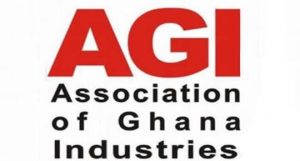Economic activity is expected to remain lack-lustre for the rest of the year despite an impressive 4.2 percent real gross domestic product (GDP) growth recorded in the first quarter of 2023, analysts at GCB Capital Research have predicted.
Several key factors, including the composite index of economic activity which has been on a contracting trend for the past seven months are contributing to this subdued outlook, it said. This continued downturn points to a potential slowdown in economic momentum, posing challenges to sustained growth.
Consumer and business confidence surveys also paint a mixed picture, reflecting the prevailing uncertain macroeconomic climate. As confidence wavers, both consumers and businesses tend to adopt a cautious approach to spending and investment, leading to a potential drag on economic activity.
“We expect real sector growth to remain broadly depressed through 2023. While improving, the composite index of economic activity has contracted in the last seven months – driven by the slowdown in leading indicators such as port activity, cement sales, private sector credit and imports,” GCB Capital said in a note following conclusion of the July Monetary Policy Committee meeting.
It emphasised that these indicators are crucial barometers of economic health, and their decline hints at underlying weaknesses in various sectors of the economy.
The tightening credit conditions add to concerns outlined in the note. As borrowing becomes more difficult for businesses and consumers alike, GCB Capital said this could restrict investment and consumer spending – further hampering economic growth.
Notably, the slowing industrial activity is identified as a pivotal contributor to the subdued forecast. With the industrial sector being a key driver of economic expansion, any slowdown in this area can have far-reaching effects on overall growth and employment opportunities.
In the note signed off by Research Lead Courage Boti, GCB Capital warned that these collective challenges may continue to weigh on the real sector, which encompasses tangible goods-producing industries, throughout the remainder of 2023.
“With the tightening credit conditions and slowing industrial activity, growth and employment creation in the real sector could remain subdued through 2023,” it added.
DDEP savings & external sector improvement
The economy has begun showing signs of improvement in its external sector, driven by factors like a temporary external debt service suspension supporting the relative strength of the cedi. In June 2023, despite a 7.9 percent year-on-year decline in export receipts to US$8.18billion due to lower oil prices and output, a sharper reduction in imports to US$6.41billion (-13.4 percent year-to-date) resulted in a larger merchandise trade surplus of US$1.77billion at the end of June (+20.13 percent year-to-date, 2.4 percent of GDP).
The current account also saw a surplus of US$849.2million (+176.4 percent year-on-year, 1.1 percent of GDP).
These positive developments have impacted the balance of payments (BoP), slowing the rate of reserve depletion during 1H23. Ghana’s Gross International Reserves rose to US$2.35billion in July 2023 (+63.5 percent year-to-date). The reserves were further bolstered by International Monetary Fund (IMF) disbursements and the successful ‘gold reserve’ policy, accumulating 7.73 tonnes of gold valued at US$480million.
While potential shocks remain a concern, GCB Capital is optimistic about 2H23 – expecting more IMF disbursements and funding to boost reserves and maintain the cedi’s resilience. An expedited external debt operation is also expected to positively impact the cedi’s near-term prospects.
On the fiscal front, revenue shortfalls continue to pose a challenge. As of May 2023, total revenue and grants were GH¢9.70billion short of the GH¢44.90billion target (5.6 percent of GDP, -21.6 percent versus target). However, fiscal consolidation is on track due to stringent expenditure controls reducing expenses to GH¢59.5billion (7.4 percent of GDP, -39.2 percent versus target).
A significant part of the expenditure control measures come from interest savings from the domestic debt exchange programme (DDEP) and external debt service suspension, rather than actual expenditure cuts. Treasury estimates show GH¢34billion in interest savings from the initial DDEP in 2023, with further savings expected from debt restructuring. Additionally, new revenue measures implemented since May 1, 2023 are anticipated to boost revenue performance in second-half of the year.







